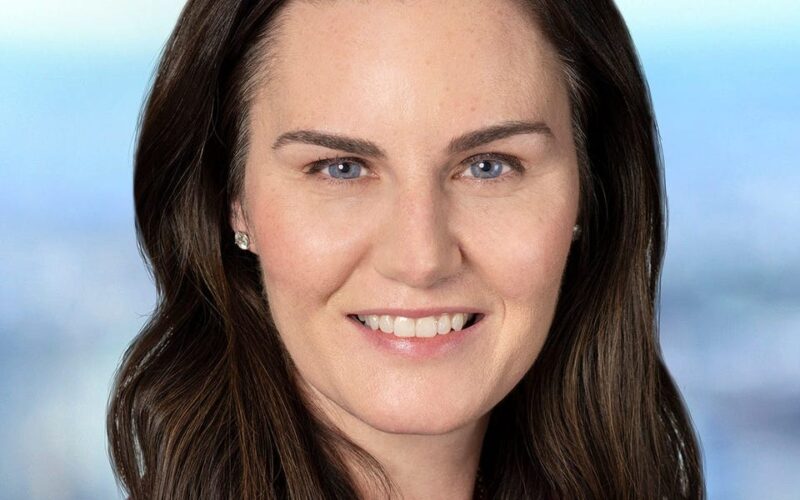- A public offering can lead to sudden wealth creation and leave founders wondering how to manage it.
- A top Goldman Sachs wealth advisor shared key considerations for startup founders.
- This article is part of “Road to IPO,” a series exploring the public-offering process from prelaunch to postlaunch.
In 1987, Bill Gates became the world’s youngest billionaire at 31. His fortune had already ballooned the year prior when his brainchild, Microsoft, went public on the Nasdaq.
Like many founders who have taken their companies public, Gates saw a sudden windfall of wealth transform his life and vault him into a new tax bracket. The bank that led Microsoft’s initial public offering was Goldman Sachs, the Wall Street behemoth famed for its leading position in terms of both advising on public issuances and handling private merger transactions.
Goldman executives have forecast in recent months an increase in public offerings this year after a slow past two years for IPOs. The accounting and tax giant EY found that IPOs were rebounding this year and has tracked 82 public offerings in the US market throughout the first half of 2024, which have collectively generated $18.6 billion in proceeds. It puts this year ahead of last year’s tally, at 63 deals producing slightly more than $10 billion in proceeds.
So far in 2024, Goldman Sachs’ IPO team has worked on 16 public offerings in the US, which generated more than $1.5 billion in value, according to deal-tracking firm Dealogic; that’s up from last year’s eight IPOs, which resulted in $930 million in value.
Founders who go through successful IPOs may find they have a host of new money-management needs, according to Kerry Blum, the global head of the equity-structuring group within private-wealth management at Goldman Sachs.
“When someone has invested a significant amount of their life in creating a company and establishing a leadership team, we appreciate that there is a lot of emotion tied to that asset,” Blum told Business Insider in an interview. “We understand that the decisions they’re making are both economically and emotionally important.”
The team reporting to Blum — a more than 20-year Goldman veteran who was elevated to the bank’s elite partnership in 2022 — supports family offices and high-net-worth clients like the founders of big-ticket companies. Blum’s team is separate from the equity-capital-markets group, which advises companies in IPOs and is situated within the investment-banking division.
Through the bank’s One Goldman Sachs program, which unites various business lines to cross-sell services to clients, Blum and her team share referrals with their colleagues in the firm’s investment-banking division. That could mean investment bankers referring clients doing IPOs or mergers to their private-wealth counterparts who work with Blum, or vice versa, for instance.
The team is equipped with a tool kit of strategies to help clients with their money-management goals — from trust and estate planning to strategizing when and how founders should sell equity.
Blum shared her advice for founders who may be on the cusp of successful IPOs and how they could work with wealth advisors to set themselves and their families up for prosperous financial futures.
Start the conversation early
If you’re considering a public offering, it’s never too early to broach the topic with an advisor, Blum said.
Many pre-IPO founders will have a relationship with a wealth advisor, she said, and it’s not unusual for them to have initial discussions several years before an IPO.
About three to six months before the IPO listing date, conversations between a founder and their advisor tend to ramp up substantially, according to Blum.
“We’ll be more engaged with clients on a more regular basis to help them understand: What does the landscape look like? What should they be expecting? And what does that final to-do checklist look like as they approach the IPO?” Blum told BI.
Think about messaging and signaling
For many founders who go through an IPO, the milestone may represent the first time they contemplate selling off big stakes of equity in a business they’ve built from scratch. It’s important to be mindful of what such decisions can indicate to other investors and to handle the process accordingly.
Indeed, founders’ equity sales often come with additional rites like issuing securities filings, “so we want to make sure that we’re being mindful of the messaging and signaling considerations,” Blum said.
“You get to take a company public once. You get to make your first sale as a founder once as well,” she added, pointing to the importance of being thoughtful and deliberate when making such moves.
Her team tracks other companies’ regulatory disclosures and information about Goldman’s own client portfolio to learn what other founders are doing.
With that information, Blum’s team can answer clients’ questions such as:
- How do their peers in the founder community think about themselves?
- When are they selling?
- How are they selling?
- How much are they selling?
- Where are they selling?
Know what your priorities are
Managing your money post-IPO is in some ways like managing your portfolio as it’s always been, but with more considerations to contend with and more resources at play, Blum said.
That means diversification across asset classes becomes even more important, as do other choices, like which philanthropic initiatives a founder may wish to support.
“We also spend some time helping clients make sure that they’ve thought through what could their impact and legacy look like,” Blum said. “And although it’s 10 or 15 years out, it’s never too early to think through how to optimize for those events.”
Source link
lol

